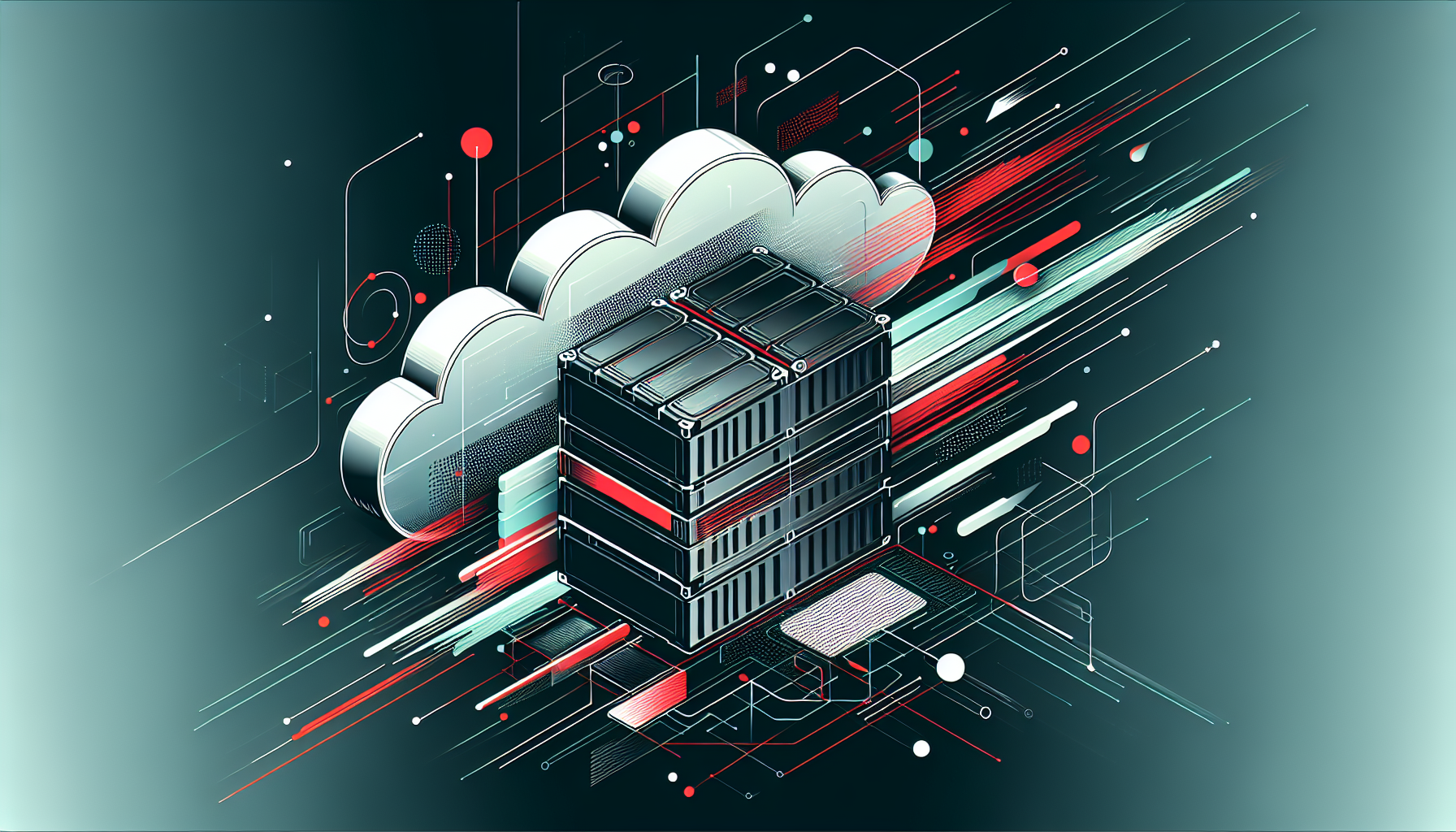Cloud Cost Optimization Techniques

Cloud Cost Optimization Techniques
Resource Rightsizing
Efficiently match resource allocation to actual workload requirements to avoid over-provisioning.
Steps to Rightsize Resources
-
Monitor Resource Utilization:
Use cloud-native monitoring tools (e.g., AWS CloudWatch, Azure Monitor, GCP Operations Suite) to track CPU, memory, and disk usage. -
Analyze Usage Patterns:
Identify underutilized instances or services (e.g., consistently running below 30% CPU). -
Adjust Resource Types:
- Downsize instance types (e.g., from AWS m5.2xlarge to m5.large).
- Use auto-scaling to dynamically allocate resources.
Sample AWS CLI Command for Rightsizing:
aws ec2 modify-instance-attribute --instance-id i-0123456789abcdef0 --instance-type "{\"Value\": \"t3.medium\"}"
Rightsizing Comparison Table
| Instance Type | vCPU | RAM (GB) | Cost/Hour | Utilization % | Action |
|---|---|---|---|---|---|
| m5.2xlarge | 8 | 32 | $0.384 | 20 | Downsize |
| m5.large | 2 | 8 | $0.096 | 70 | Adequate |
Instance Purchasing Options
Choose the right purchasing model to balance flexibility and cost.
| Option | Description | Savings Potential | Use Case |
|---|---|---|---|
| On-Demand | Pay for compute capacity by the hour/second | None | Spiky workloads |
| Reserved Instances | Commit to 1–3 years for lower rates | Up to 72% | Steady-state workloads |
| Savings Plans | Flexible pricing for committed spend (AWS) | Up to 72% | Predictable compute usage |
| Spot/Preemptible | Use unused capacity at deep discounts, subject to interruption | Up to 90% | Fault-tolerant/batch jobs |
Sample AWS CLI for Spot Instances:
aws ec2 run-instances --instance-type t3.medium --instance-market-options 'MarketType=spot'
Storage Optimization
Reduce storage costs through efficient usage and lifecycle management.
Tactics
-
Delete Unused Volumes:
Identify unattached EBS volumes or unused disks and remove them. -
Leverage Object Storage Tiers:
Move infrequently accessed data to cheaper tiers (e.g., S3 Standard → S3 Glacier).
AWS S3 Lifecycle Policy Example (JSON):
{
"Rules": [
{
"ID": "MoveOldObjectsToGlacier",
"Filter": {},
"Status": "Enabled",
"Transitions": [
{
"Days": 30,
"StorageClass": "GLACIER"
}
]
}
]
}
- Enable Data Compression/De-duplication:
Use built-in features or third-party tools to reduce storage footprint.
| Storage Tier | Use Case | Cost/GB (approx.) | Retrieval Time |
|---|---|---|---|
| S3 Standard | Frequent access | $0.023 | Milliseconds |
| S3 Infrequent Access | Infrequent, rapid access | $0.0125 | Milliseconds |
| S3 Glacier | Archive, long-term storage | $0.004 | Minutes to hours |
Automation and Scheduling
Avoid paying for idle resources by automating start/stop schedules.
Implementation
-
Tag Resources for Scheduling
Apply tags (e.g.,AutoStop=true) to instances. -
Use Scheduled Lambda Functions or Cloud Scheduler
Automate shutdown outside business hours.
AWS Lambda Stop EC2 Example (Python):
import boto3
ec2 = boto3.client('ec2')
def lambda_handler(event, context):
ec2.stop_instances(InstanceIds=['i-0123456789abcdef0'])
Implement Auto Scaling
Auto scaling matches resource supply with demand, reducing unnecessary costs.
How To
-
Set Up Auto Scaling Groups
Define minimum, maximum, and desired instance counts. -
Configure Scaling Policies
Trigger scale-in/out based on metrics (CPU utilization, queue depth).
| Scaling Policy Type | Trigger Example | Use Case |
|---|---|---|
| Target Tracking | Maintain 60% CPU | General workloads |
| Step Scaling | Add 2 instances at 80% | Handle sudden spikes |
| Scheduled Scaling | Scale up at 9am weekdays | Predictable loads |
Leverage Serverless Architectures
Serverless services (AWS Lambda, Azure Functions, GCP Cloud Functions) charge only for execution time, eliminating idle cost.
Actionable Tips
-
Containerize Microservices:
Migrate APIs to serverless if feasible. -
Monitor Function Usage:
Set concurrency limits and optimize code to reduce execution time.
Optimize Networking Costs
Reduce data transfer and network service expenses.
Techniques
-
Use Same-Region Resources:
Minimize cross-region data transfer. -
Leverage Private Endpoints:
Avoid public internet egress charges by using VPC endpoints. -
Compress Data in Transit:
Use gzip or similar compression for large data transfers.
| Data Transfer Type | Cost/GB (AWS Example) |
|---|---|
| Same Availability Zone | Free |
| Same Region | Free |
| Cross-Region | $0.02 |
| Internet Egress | $0.09 |
Licensing and Marketplace Optimization
-
Bring Your Own License (BYOL):
Where permitted, reuse existing software licenses. -
Use Open Source Alternatives:
Substitute paid database engines or tools with open-source equivalents. -
Evaluate Marketplace AMIs/Solutions:
Compare costs before subscribing to third-party marketplace offerings.
Continuous Cost Monitoring and Alerts
Implement real-time cost tracking and automated budget alerts.
Tools
- AWS Cost Explorer / Budgets
- Azure Cost Management + Billing
- GCP Billing Reports
Setting an AWS Budget Alert (AWS Console):
1. Go to Billing > Budgets > Create budget.
2. Set monthly threshold (e.g., $1,000).
3. Define alert recipients.
Tagging and Cost Allocation
Consistent tagging enables granular chargeback and analysis.
Best Practices
-
Tag All Resources:
Use keys likeEnvironment,Owner,Project,CostCenter. -
Enforce Tagging via Policy:
Implement tools like AWS Service Control Policies or Azure Policy.
Sample Tagging Policy (JSON):
{
"TagKey": "CostCenter",
"TagValue": "Required"
}
Regular Cost Audits and Cleanup
Schedule periodic reviews of cloud environments to identify waste.
Checklist
-
Orphaned Resources:
Unattached volumes, unused snapshots, deprecated load balancers. -
Zombie Instances:
Running VMs with no associated traffic. -
Old AMIs and Backups:
Remove obsolete images and backup files.
Using Third-Party Cost Optimization Tools
Enhance native capabilities with specialized platforms:
| Tool | Key Features |
|---|---|
| CloudHealth | Recommendations, governance, automation |
| Spot.io | Automated spot instance management |
| CloudCheckr | Cost allocation, security, optimization |
| CAST AI | Kubernetes cost optimization |
Kubernetes Cost Optimization
For containerized environments, optimize cluster usage and scaling.
Practical Steps
-
Use Cluster Autoscaler:
Automatically adjust node count based on workload. -
Pod Rightsizing:
Set resource requests/limits based on actual usage. -
Node Pool Diversification:
Mix on-demand and spot/preemptible nodes.
Example: Limit Pod Resource Requests (YAML):
resources:
requests:
cpu: "250m"
memory: "512Mi"
limits:
cpu: "500m"
memory: "1Gi"
Summary Table: Key Optimization Levers
| Technique | Savings Potential | Complexity | Automation Possible | Example Tool |
|---|---|---|---|---|
| Rightsizing | High | Low | Yes | CloudWatch |
| Reserved/Spot Instances | High | Low | Yes | Spot.io |
| Storage Lifecycle | Medium | Low | Yes | S3 Lifecycle |
| Auto Scaling | High | Medium | Yes | AWS Auto Scaling |
| Serverless | High | Medium | Yes | Lambda, Functions |
| Cost Monitoring/Alerting | Medium | Low | Yes | Cost Explorer |
| Tagging & Allocation | Low | Medium | Partial | AWS Tagging Policies |
| Kubernetes Optimization | High | High | Yes | CAST AI, KubeCost |





0 thoughts on “Cloud Cost Optimization Techniques”